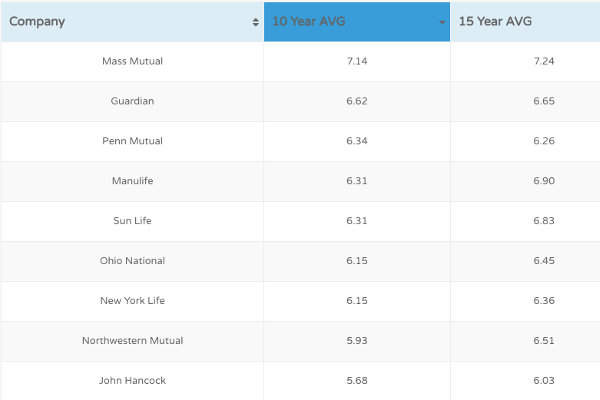At Top Whole Life, we understand that the cost of life insurance is a significant consideration for individuals and families looking to protect their financial future. The premium you pay for life insurance is determined by various factors that assess your risk profile and the coverage you require. In this blog post, we will explore the key factors that affect the cost of life insurance, helping you understand what determines your premium.
Remember, the cost of life insurance is not solely determined by one factor but is a combination of various elements that assess your risk profile. By understanding these factors and making informed decisions, you can ensure that you are getting the best value for your life insurance premium.
Age and Health
One of the primary factors that influence the cost of life insurance is your age and health. Generally, the younger and healthier you are, the lower your premium will be. This is because younger individuals are statistically less likely to pass away, resulting in a lower risk for the insurance company. Additionally, individuals with good health have a longer life expectancy, reducing the likelihood of a claim being made. Therefore, it is essential to secure life insurance at a younger age to benefit from lower premiums.Gender
Believe it or not, gender plays a role in determining the cost of life insurance. On average, women tend to live longer than men, resulting in lower premiums for females. This is because insurance companies consider the life expectancy of each gender when calculating the risk. However, it's important to note that individual factors such as health and lifestyle choices will also impact the premium.Lifestyle Choices
Your lifestyle choices can significantly impact the cost of life insurance. Insurance companies assess factors such as smoking, alcohol consumption, and participation in high-risk activities when determining your premium. Individuals who smoke or have a history of substance abuse are considered higher risk, resulting in higher premiums. Similarly, engaging in dangerous hobbies or occupations can also increase your premium due to the increased likelihood of accidents or injuries.Coverage Amount
The amount of coverage you choose will directly affect the cost of your life insurance premium. The higher the coverage amount, the higher the premium will be. This is because a larger coverage amount means a higher potential payout for the insurance company in the event of a claim. It's important to carefully consider your financial needs and obligations when deciding on the coverage amount to ensure you have adequate protection without overpaying for unnecessary coverage.Policy Type
The type of life insurance policy you choose will also impact the cost of your premium. There are various types of life insurance, including term life insurance and whole life insurance. Term life insurance provides coverage for a specific period, typically 10, 20, or 30 years, while whole life insurance offers coverage for your entire life. Generally, term life insurance premiums are lower compared to whole life insurance premiums. However, whole life insurance offers additional benefits such as cash value accumulation and the potential for dividends.Medical History
Your medical history and any pre-existing conditions can affect the cost of your life insurance premium. Insurance companies typically require applicants to undergo a medical examination or provide medical records to assess their health. If you have a history of chronic illnesses or significant health issues, your premium may be higher. On the other hand, individuals with a clean bill of health can benefit from lower premiums.Secure your future today with affordable life insurance coverage. Get a quote now!
Click below to get a Quote Now!
Get Me A QuoteFamily Medical History
In addition to your own medical history, your family's medical history can also impact the cost of your life insurance premium. Insurance companies consider the presence of hereditary diseases or conditions that may increase your risk of premature death. If your family has a history of heart disease, cancer, or other serious illnesses, your premium may be higher. It's important to disclose accurate information about your family medical history during the application process to ensure transparency and avoid any potential issues with your coverage.Occupation and Income
Your occupation and income can also influence the cost of your life insurance premium. Certain occupations are considered higher risk due to the nature of the work involved. For example, individuals working in hazardous industries or professions may face higher premiums. Similarly, your income level can impact your premium as it is often used to determine the appropriate coverage amount. Individuals with higher incomes may require larger coverage amounts, resulting in higher premiums.Driving Record
Your driving record can affect the cost of your life insurance premium, especially if you have a history of traffic violations or accidents. Insurance companies consider your driving record as an indicator of your overall risk profile. Individuals with a clean driving record are typically viewed as lower risk, resulting in lower premiums. On the other hand, individuals with multiple violations or accidents may face higher premiums due to the increased likelihood of premature death.FAQ
- How can I lower the cost of my life insurance premium?
- Can I change my life insurance policy in the future if my circumstances change?
- Is it possible to get life insurance with pre-existing medical conditions?
- How often should I review my life insurance coverage?
- Can I cancel my life insurance policy if I no longer need it?
Conclusion
As you can see, several factors determine the cost of life insurance. Age, health, gender, lifestyle choices, coverage amount, policy type, medical history, family medical history, occupation and income, and driving record all play a role in calculating your premium. At Top Whole Life, we understand the importance of finding the right coverage at an affordable price. Our team of experts is here to guide you through the process, helping you secure the best life insurance policy that meets your specific needs and budget.Remember, the cost of life insurance is not solely determined by one factor but is a combination of various elements that assess your risk profile. By understanding these factors and making informed decisions, you can ensure that you are getting the best value for your life insurance premium.




